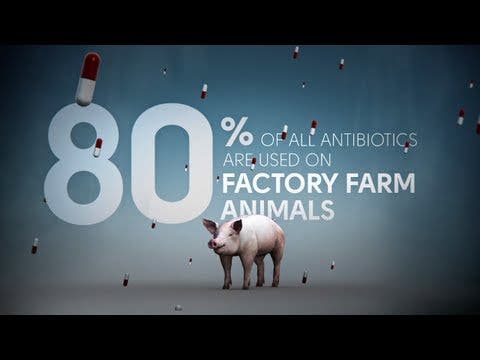
A report released to the public by the USDA Inspector General states that numerous beef samples were found to contain penicillin, the antibiotics florfenicol, sulfamethazine and sulfadimethoxine, the antiparasite drug ivermectin, the nonsteroidal anti-inflammatory drug flunixin and heavy metals. Some of the meat entered the human food supply, and as we all know what your food ate you eat. No attempt at a recall was made.
The report highlights once again the poor regulating conditions in the US for meat destined for human consumption. While there’s a whole crazy by itself going on with human pharmaceuticals, as people flock for panaceas – some taking drugs that they don’t actually need – at least these are fairly regulated. Alright, even with human pharma there are problems, but at least you need a prescription. Things are much more covert and underground with animal pharma. Many veterinarian related drugs like antibiotics hormones, growth promoters, feed additives and antiparasite and antifungal drugs are loosely regulated and monitored.
Sure, government bodies like the USDA is there to monitor how these drugs are administered and to make sure farmers take measures so that when the animals are sacrificed for their meat, the drugs are completely out of their system. This doesn’t always happen and repeat offender farms that sell meat contaminated with drug residues are discovered on a weekly basis.
The report identifies 211 drug residue violations from just four plants. Some of the drugs found in samples include:
- Antibiotics. A report from the Natural Resources Defense Council report revealed that 26 of 30 antibiotics approved for use in livestock feed failed the FDA’s own safety tests, yet are still in use. ”The FDA continues to knowingly allow the use of drugs in animal feed that likely pose a ‘high risk’ to human health,” said Carmen Cordova, a microbiologist and lead author of the report. “That’s a breach of their responsibility and the public trust.”
- Ractopamine;
- Hormones. Drugs like oestradiol-17, zeranol, trenbolone acetate and melengestrol acetate ;
- Pesticides;
- Drugs in sea foods;
- Parasite drugs;
Learn more at the Salon editorial written by Martha Rosenbrg.






